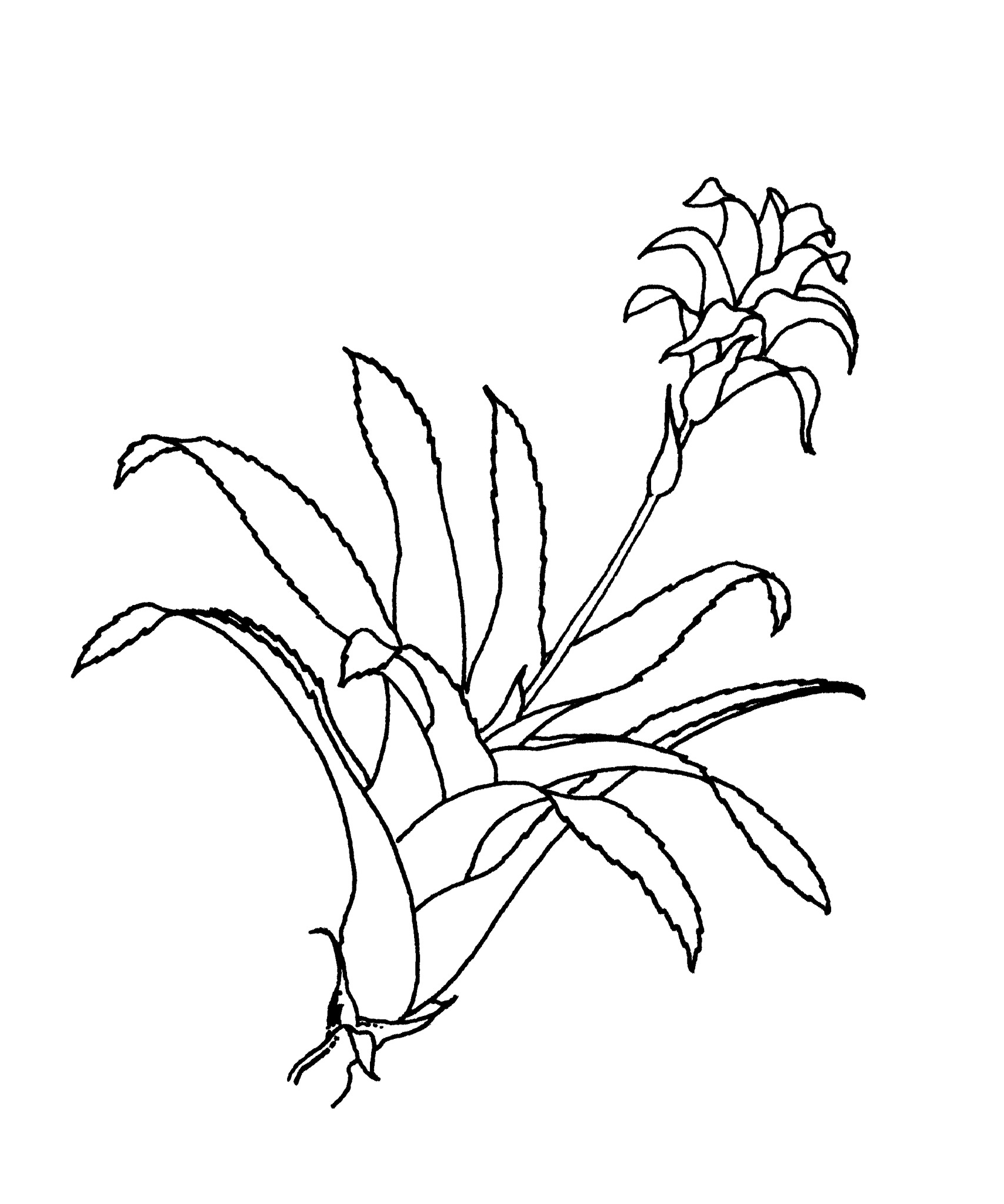
Leaves 10-16 in a dense funnel-like rosette 30-70 cm long, 1.8-3.8 cm wide, ligulate; sheaths broadly elliptic, about 10 cm long, entire; blades with fine spined margins. Scape erect. Inflorescence compound, few-flowered. Primary bracts broadly ovate with a short or long lanceolate blade to 7 cm long, much exceeding the flowers, yellow to orange, red or purple; floral bracts entire, slightly exceeded by the sepals; sepals 12-15 mm long, united for 5 mm; petals united for two-thirds of their length, white opening only slightly. [Canistropsis billbergioides (Schult. f.) Leme]
South-eastern Brazil
At least 9 cultivars are recognised including those with leaves green with coloured primary bracts: apricot, blood orange, citron, guava, lemon, persimmon and tuttifrutti (orange flushed mulberry), and those with leaves dark reddish-purple with coloured primary bracts: mulberry and tamarillo (orange flushed mulberry).
These plants can be grown with a little winter protection.
N. burchellii (Baker) Mez from south-eastern Brazil has long slender stolons. Leaves few in a sub-cylindrical rosette, 20-50 cm long, 2-5 cm wide, ligulate; sheaths broadly elliptic, mainly entire; blades green on top, red below, spined. Scape short with lanceolate to ovate green bracts. Inflorescence globose, 25-55 mm long, fascicles few-flowered; floral bracts green; sepals 10 mm long; petals 18 mm long, white, blades spreading. [Canistropsis burchellii (Baker) Leme]
Source: (2005). Bromeliaceae. In: . Horticultural Flora of South-eastern Australia. Volume 5. Flowering plants. Monocotyledons. The identification of garden and cultivated plants. University of New South Wales Press.
